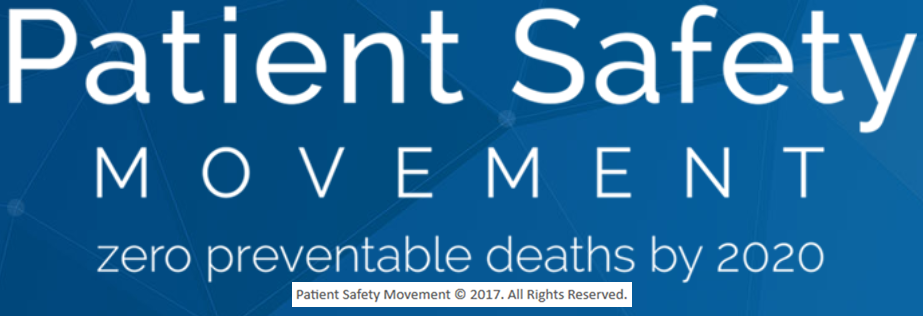
N.B. — This post is based on one of the continuously expanding roster of Actionable Patient Safety Solutions (APSS) a.k.a. “Challenges” as defined and described by the Patient Safety Movement Foundation (PSMF) and published at its web site (http://patientsafetymovement.org/challenges-solutions/actionable-patient-safety-solutions-apss/). Because the Foundation has set a goal of Zero Preventable Patient Deaths by 2020 (http://patientsafetymovement.org/), these APSS are understood to represent the most significant patient safety exposures created by medical mistakes, and medical mistakes are the third most frequent cause of patient deaths following heart disease and cancer (http://www.bmj.com/content/353/bmj.i2139).
“Implementing a culture of safety will require an implementation plan to complete the following actionable steps:
- Achieving a culture of safety in a healthcare requires transformational change which is owned and led by the top leaders of the organization, including the board.
- Transparency, both within and outside of the organization, drives improvement across the continuum of care.
- Understanding and implementing Just Culture is essential for transitioning from a culture of shame and blame to one of trust and respect, but with accountability.
- If patient harm results from a medical error: apologize in 30 minutes, pay for all care, seek a just resolution; provide a credit card for future care of survivor of harm.
- Creation of a reliable means to capture and analyze good catches/near-miss is the key to identifying and addressing unstable processes and systems.
- Both safety culture and patient outcomes require continual assessment: “What is measured gets managed.”
- Hospital governance and senior administrative leadership must commit to the major performance gap. Leaders cannot simply be “on board” with patient safety – they must own it.
- Create and maintain five components of a safety culture to achieve a high-reliability organization:
- Establish Trust
- Establish Accountability
- Identify unsafe conditions
- Strengthen Systems
- Assess and Continuously Improve the Safety Culture
- Develop a strong infrastructure ensuring:
- Budgets allow for an adequate number of quality and patient safety professionals
- Implementation and ongoing monitoring of a comprehensive patient safety program that is approved by the Board of Trustees.
- Create an internal working group made up of quality department, nursing, risk management, patient safety, patient advocacy and regulatory leaders.
- Develop a ‘Good Catch’ Program to recognize and reward staff for reporting near misses or system issues.
- Implement an electronic adverse event reporting system that allows for anonymous reporting, tracking, trending and response to aggregate safety data.”
The foregoing quote constitutes the “Executive Summary Checklist” from the above-captioned PSMF APSS Challenge #1 (http://patientsafetymovement.org/challenge/creating-a-culture-of-safety/). Although the included bullet points are laudable and appropriate, they relate for the most part to administrative and technical “human factors,” which inherently are problematic for reliably repeatable execution. Only the items “Creation of a reliable means to capture and analyze good catches/near-miss is the key to identifying and addressing unstable processes and systems” and “Implement an electronic adverse event reporting system that allows for anonymous reporting, tracking, trending and response to aggregate safety data” lend themselves to information technology (IT) enablement a.k.a. automation. These are the opportunities for a CHARTSaaS reference architecture-compatible solution to reliably mitigate mistakes and to save lives. Please validate this proposition to your own satisfaction by reviewing the details of the Cloud Healthcare Appliance Real-Time Solution as a Service (CHARTSaaS) and its reference architecture in these presentations and imagining an IT solution: